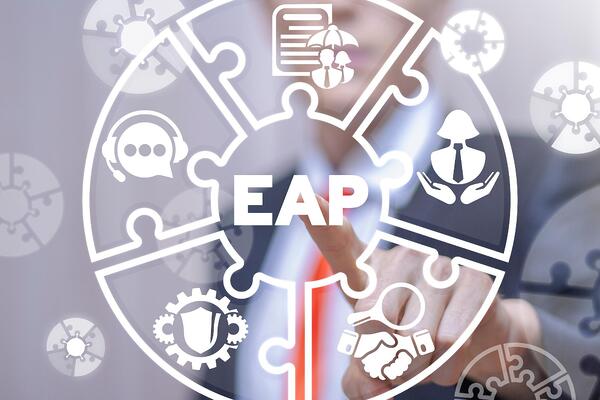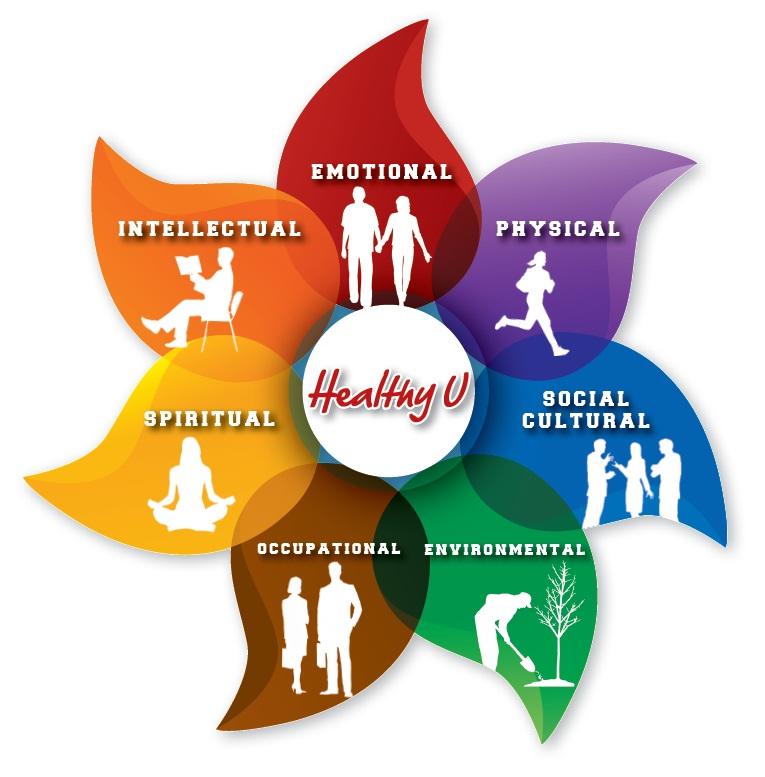Do you feel like your employees are under too much stress? Or do they complain about feeling overwhelmed with work and family obligations? Do they lack the resources to deal with these issues, such as counseling or therapy sessions? If so, then it is time for you to look into an employee assistance program (EAP). Some employers may be hesitant about this idea because of the cost. However, in the long run, implementing an EAP will save money by preventing burnout and turnover rates. In this article, we will review what an EAP is and how it can benefit both employees and employers alike.
Contents
What is an Employee Assistance Program?

An EAP is a service offered by an employer to support the mental, emotional, and physical health of employees. This includes providing resources for counseling or therapy sessions.
Employee Assistance Programs are becoming increasingly popular in American workplaces today. These programs work to reduce stress-related problems among employees. This leads to improved productivity at work and a better work-life balance. An EAP can include a variety of services at no cost to the employee. This may include:
- Access to counselors and therapists 24 hours per day, seven days per week either by phone or in-person
- Goal-setting sessions with counselors and therapists to help employees take steps towards achieving their goals for work/life balance
- Employee Assistance Plans. These are voluntary programs that offer employees up to a certain dollar amount of coverage for counseling services.
- Online resources such as articles and videos on various topics regarding work/life balance.
Types of EAP Referrals
Employers can offer employees access to an EAP in different ways. One of the most common methods is through a referral from their manager or human resources department. Another option is for employers to include mental health services as part of their company benefits plan. It may also be referred to as a Health and Wellness Plan.
- Self-referral. Employees or family members contact the EAP directly instead of a third party (e.g., Human Resources).
- While the employee asks for an informal meeting, his or her manager suggests that he or she use an EAP. A colleague (who may or may not have used an EAP) tells him or her to utilize one.
- The Employee Assistance Program (EAP) is a formal program. A supervisor, manager, or Human Resources representative may recommend it based on personal experience. A counselor at the EAP recommends the program to an individual based on what he/she sees. Poor performance or disciplinary actions might necessitate a formal referral. A formal referral was made as a result.
Critical Requirements for an Employee Assistance Program
Employers should know that there are certain requirements for an EAP to be effective.
- The service must be free of charge and voluntary in order to gain the trust of employees and encourage them to use it
- Counselors need adequate training in treating a variety of issues. These issues and include mental problems, such as stress, depression, or substance abuse.
- Access to services needs to be convenient.
- Counselors have access to records on employees, which is important for maintaining confidentiality.
- An interdisciplinary advisory board that includes representatives from all levels of the employer’s organization. This includes leadership, line employees, critical departments, and unions.
- The capacity to adapt services to changing demands.
- 24 hours a day, seven days a week, crisis intervention services are accessible.
- The following is a list of procedures for determining the provision of short-term problem-resolution services. They determine when to provide the services and when to refer a client to expert or community resources.
- Leaders of the employer organization should undergo this training. This is done so that they can identify challenges and recommend individuals to the EAP.
- Professionals who are trained and keep their skills up to date.
Why Choosing an EAP?

An employee assistance program or EAP is a service provided to employees and their families so they can better cope with problems in the workplace. The goal of an EAP is to help staff accomplish work goals, remain productive and content at all times. It helps organizations avoid high turnover, which saves money as well as time that would be spent on hiring and training new staff. EAPs also help reduce the risk of lawsuits from employees, lower absenteeism rates, and improve productivity among other benefits to employers.
EAP providers have a variety of services that can be customized according to the needs of different organizations. They offer programs for both businesses as well as individuals in need including:
- Confidential assessments, short-term counseling, and referrals for workplace counselors
- Training courses on topics such as stress management or coping with mental health problems
- Employee assistance plans that can help employees pay for treatment costs using pre-tax dollars
- EAPs are relatively affordable compared to hiring a new staff member plus the cost of training them. They also help keep morale high as employers can offer them to employees and their families at no out-of-pocket cost.
- EAPs are available 24/7 so workers do not have to worry about missing work due to the need for seeking care. They also provide a gateway to treatment services such as short-term counseling, drug rehabilitation programs, or health seminars.
- EAPs are not meant to replace the need for seeing a doctor or therapist. One should see them as an additional resource that employees can utilize if needed.
- Employees who think they might benefit from using EAP services can contact their human resources department and ask about available plans, pricing options, and any other questions they have before enrolling.
6 Steps Of Implementation of an Employee Assistance Program

There are two primary types of EAPs, according to the U.S Department of Labor’s Job Accommodation Network: workplace-focused and grassroots. Both have their advantages for employers looking to implement an Employee Assistance Program in the workplace.
A CEO or executive team might establish a grassroots plan that can be offered by any employee. This is beneficial because the cost of this type of EAP falls on everyone in the organization. It never falls on just one department or employer.
A workplace-focused plan would be an option for larger organizations. There most employees are employed by a single company. They may have more specific needs than those offered through grassroots options.
Employee Assistance Programs are quite complicated if you do not have the root knowledge of how it works. And implementation is even harder if there is a lack of a systematic approach.
We will discuss a few points on how an organization can install an EAP.
Plan the Structure
A firm and solid foundation of any construction is its stronghold, and a sound EAP design is no exception. Plan ahead of time how you want to implement an EAP in the workplace. Set goals for yourself with EAPs that you’d like to see implemented in your company.
You’ll be able to onboard EAPs with ease once you’ve set everything up. This way you can see the goals clearly. The company will be able to maximize the program’s efficiency. They do it by implementing planned improvements with a structured plan as a result of this.
Furthermore, since they stuck to the same plan and took quick action. The management will have a clear understanding of how the program will function.
Mind the Budget
Employee Assistance Programs are accessible to any size business. Whether you’re a big company or a small firm, it doesn’t matter. However, it makes the biggest distinction when budget constraints come into play with program implementation.
Although small businesses might be tempted by lucrative EAPs, this is not an option for major corporations. This is why managing EAPs on a budget is so important. You may want to give your staff all of the necessary help without breaking the year’s budget.
Select the Vendor
Choosing the appropriate EAP vendor is one of the most crucial aspects of putting one into action. There are several vendors on the market. But which one is right for your organization will depend on what you need.
While choosing the vendor, you can look out for certain parameters like-
- Years of service, experience, and genuine testimonials.
- Cost of the vendor within your budget.
- Scope of services covered by the EAP.
- Geographical accessibility.
- Availability of services 24×7.
- Good customer service and satisfaction levels.
The requirements may vary depending on the organization’s needs. But make a list of all of your demands so that the EAP provider covers all of your essential areas.
Flexibility
The adaptability of a program makes it more successful and long-lasting in the end. What does it imply to put an EAP into practice?
The solution is straightforward. You can’t expect a program to function with the solutions you began with. To make the system more efficient, the companies implement fresh ideas. A program that relies on out-of-date services will become a liability today.
However, if your EAP permits adaptability, you may adjust the program on a regular basis and include services in line with the latest trends. Making an EAP that is both effective and useful to your company in the long run.
Introduction and Employees understanding of the Program
If you neglect to explain EAP to your staff, the procedure of introducing it will never finish the procedure. Once employees understand what an EAP is and how it may benefit their lives, make them aware of the advantages it offers.
Ensure that an EAP Q&A session is held for employees to submit questions and concerns about the program. Have a panel of experts prepared to respond to any inquiries so that employees may comprehend EAPs and make full use of them for their benefit. The more benefits they will receive, the better their satisfaction levels will help the company’s bottom line with enhanced productivity and engagement.
Role of an HR in EAP Process
It’s important to keep in mind that an EAP is a community-based program. It is not the responsibility of only one department. It needs input from several departments like HR, Legal or Compliance, Clinical Management Team (in case of healthcare), etc. This will make it more successful for every employee regardless of their role within the company.
Some businesses, however, outsource EAP services to certified experts. They can handle compliance and reporting issues as well as comprehensive counseling and referral services. With 62 percent of employers outsourcing their EAPs, EAPs are the most outsourced HR function.
Even if an organization decides to outsource the EAP, the HR team is generally front and center. They are responsible for recognizing EAP requirements, selecting a vendor, managing the relationship, and measuring outcomes. HR normally establishes and enforces regulations and standards. It also instructs staff about what the EAP has to offer. It also helps in promoting a healthy and productive workforce.
EAP Delivery Models

There are three popular EAP delivery models:
- Management-sponsored EAPs. These are in-house programs with the EAP staff being directly employed by the company. This is a common type of EAP for big companies.
- Fixed-fee contracts. Employers pay for a variety of services, such as counseling, referrals, and supervisory training, depending on the number of workers they have.
- Fee-for-service contracts. The client pays the EAP provider directly, with no intermediaries.
- Consortia. Small companies can collaborate to get EAP services at a lower cost per employee.
- Member assistance programs. Unions provide member assistance programs (MAPs) to assist employees and their family members with a variety of problems. This includes both prevention and problem identification, as well as referrals and counseling services.
- Peer assistance programs. Peer assistance programs are also known as peer assistance networks (PANs). They work to train people to assist one another in addressing drug abuse and other issues within strict parameters.
- Mixed-model programs. Businesses and unions employ them with numerous workplaces that require varying resources.
The third model of employee assistance program is the most popular because it’s convenient, cost-effective, and private. Letting employees access information online without making an appointment or giving their personal details relieves them of any unnecessary anxiety about seeking help for mental health issues while also respecting their confidentiality. Employee Assistance Programs are a useful tool to manage risk while also improving employee health and well-being.
Choosing an EAP Vendor
The next step in establishing an EAP is choosing a vendor. Employers can determine which vendors are best for their organization by reviewing the following:
- Specific services offered: There are a number of different types of EAPs, so employers should look for an option that offers the specific services their employees need. For example, if an employer wants to focus on substance abuse treatment and counseling, they may want to consider looking into a program that specializes in this area over one that only.
- Pricing: Employers should consider the pricing structure of each vendor. For example, some offer a flat fee with unlimited contact while others charge per session or by the number of sessions used. Optionally, employers could include a section on how to choose an EAP that fits their needs. This might go into detail about what kind of services the EAP offers, what type of pricing structure it uses.
- Years of service, references, and current clients: Is the vendor mentioned by any other firms with comparable employment?
- Ability to provide services to employees in different locations: Is there any way the provider can handle clients that aren’t all in the same city?
- Scope of services: Is the vendor able to provide a comprehensive range of services, such as stress management, elder care assistance, substance abuse treatment, health programs, and financial counseling?
- Referrals: Is the vendor able to refer workers to other resources if they require more or different assistance than the EAP can offer?
- Follow-up services: Is there a way to keep track of clients’ progress and guarantee they continue to receive the assistance they require?
- Credentials and training: Is the EAP provider able to provide evidence that its expert staff have been trained and possess current, valid credentials?
Conclusion
Employee Assistance Programs exist to help employees in need while not harming their employment status or performance. They are paid for by employers. They typically have an anonymous, free hotline that anyone can call if they feel overwhelmed by stress at work. This is an employer’s solution to the growing number of people with stress and anxiety issues. Employee Assistance Programs are available through private companies, but they also exist as part of health insurance plans. The benefit is free for employees. It may be worth checking out what your own company offers if you aren’t already taking advantage of these programs.
Do you want to keep your employees happy, healthy, and productive? Join our employee assistance program and get a healthier workplace.


